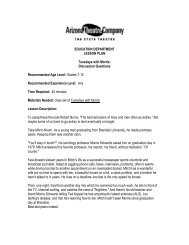Clybourne Park (PDF) - Arizona Theatre Company
Clybourne Park (PDF) - Arizona Theatre Company
Clybourne Park (PDF) - Arizona Theatre Company
- No tags were found...
You also want an ePaper? Increase the reach of your titles
YUMPU automatically turns print PDFs into web optimized ePapers that Google loves.
HANSBERRY V. LEE: INSPIRING A RAISIN IN THE SUNHansberry’s play drew inspiration from her own childhood growing up onChicago’s South Side and moving into an entirely white neighborhoodat a young age. Many neighborhoods had racially restrictive covenants,agreements written into the property deeds binding the owners to notsell or rent their property to specific minority groups.In 1937, Lorraine’s father, Carl, a realtor active in the NAACP, bought ahouse in Washington <strong>Park</strong>, a “restricted” all-white neighborhood ofWoodlawn. Like most of Chicago, the neighborhood had estate covenantsprohibiting sales to African-Americans. The specific covenant in Washington<strong>Park</strong> stated, “no part of said premises shall in no manner be used or occupiedby a negro or negroes.” The covenant did specify that African-Americanscould be chauffeurs or house servants, as long as they did not own theHeadline from The Chicago Defender in 1940 announcing the verdict of Hansberry v. Lee.house. Anyone who signed the covenant covering the same land in theneighborhood could enforce these covenants. The Kenwood ImprovementAssociation filed a mandatory injunction for the family to vacate their home. With support of the NAACP, Carl Hansberry challenged theinjunction and took the case all the way to the Supreme Court in a case bearing the Hansberry family name. Hansberry’s lawyers wonthe case when the court rejected the specific covenant impacting the Hansberry family, but did not achieve a ruling on the constitutionalityof restrictive residential covenants. The Supreme Court eventually ruled racially restrictive covenants a violation of the fourteenthamendment eight years later in Shelley vs. Kraemer when an African-American couple purchased a home in a restricted neighborhoodin St. Louis.– Written by Lena Hoffmann, reprinted with permission from Milwaukee Repertory Theater.“My father was typical of a generation of Negroes who believed that the “American way” could successfully be made to work to democratizethe United States. Thus, twenty-five years ago, he spent a small personal fortune, his considerable talents, and many years of his life fighting,in association with NAACP attorneys, Chicago’s “restrictive covenants” in one of this nation’s ugliest ghettos.The fight also required our family to occupy disputed property in a hellishly hostile “white neighborhood” in which, literally, howling mobssurrounded our house. One of their missiles almost took the life of the then eight-year-old signer of this letter. My memories of this “correct”way of fighting white supremacy in America include being spat at, cursed and pummeled in the daily trek to and from school. And I alsoremember my desperate and courageous mother, patrolling our house all night with a loaded German Luger, doggedly guarding her fourchildren, while my father fought the respectable part of the battle in the Washington court.”– Lorraine Hansberry, letter to the editor, New York Times, April 23, 19646


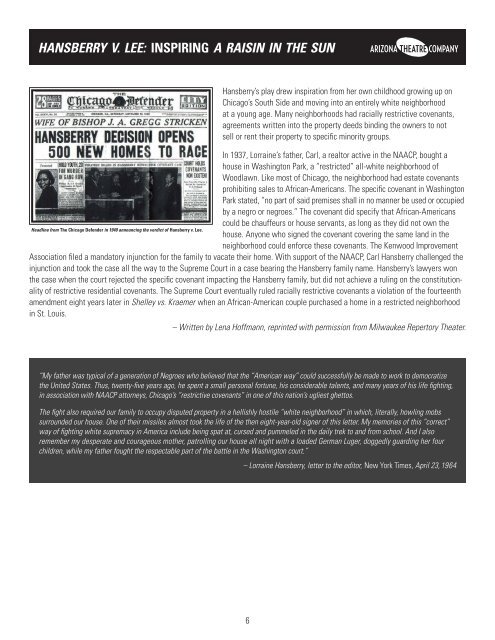
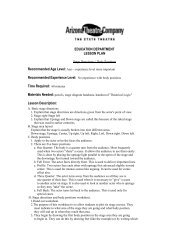



![Play Guide [356k PDF] - Arizona Theatre Company](https://img.yumpu.com/46218320/1/190x245/play-guide-356k-pdf-arizona-theatre-company.jpg?quality=85)
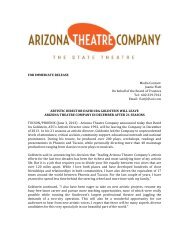
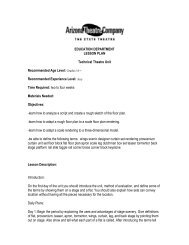
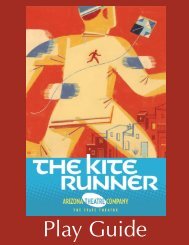
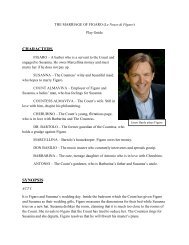
![[title of show] Arizona Theatre Company Play Guide 1](https://img.yumpu.com/24482689/1/190x245/title-of-show-arizona-theatre-company-play-guide-1.jpg?quality=85)
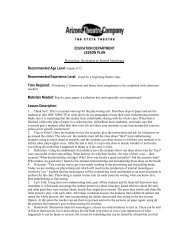
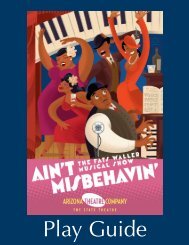
![Play Guide [1.2MB PDF] - Arizona Theatre Company](https://img.yumpu.com/11952176/1/190x245/play-guide-12mb-pdf-arizona-theatre-company.jpg?quality=85)
